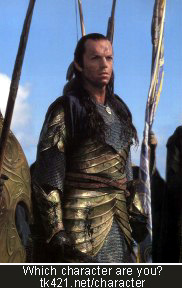THE ISRAELI SOLDIERS' PROTEST CONTINUES

Novelist and Israeli Defense Forces veteran Alan Kaufman, writing in, of all places, the Los Angeles Times, describes the continuing anti-Olmert government protests by Israeli soldiers returning from Lebanon, and by residents of Northern Israel. Lest this movement be mistaken for an anti-war protest, Kaufman notes:
"What makes the soldiers' movement so unique is that unlike most groups who assemble to protest a war, these demonstrators are not arguing that the war shouldn't have been waged. Rather, they're furious because it was stopped too soon, before they could dislodge Hezbollah from southern Lebanon. Israel's decision to pull back its troops has left the Iranian-backed terrorist army in place with an arsenal of about 8,000 missiles still aimed at Israel's northern cities and towns."Kaufman writes accurately about national disgust with the behavior of Israel's political, media and social elites, as typified by the city of Tel Aviv:
And then, when the war was underway, while troops perished needlessly in northern Israel and residents cowered in their shelters, citizens in Tel Aviv continued to lounge on beaches, dance in discotheques and obsess about their pedicures and tans.As noted by Yair Sheleg in Haaretz, no less an authority than head of the Israeli Defense Forces personnel directorate, Eleazar Stern, noted in an interview with Army Radio, "Tel Aviv residents are not taking a substantial part in the fighting. In Tel Aviv there has not been bereavement and there will not be bereavement." In contrast to Tel Aviv, Stern "approvingly" noted the role of the national-Orthodox, residents of kibbutzim and immigrants from the Commonwealth of Independent States (the former USSR) and Ethiopia.
Sheleg writes, "The data speak for themselves: Out of 117 enlisted and reserve soldiers killed in the last war, 12 were Orthodox (including six settlers, three from Eli), 12 were immigrants from the CIS, 15 were residents of kibbutzim, 15 were residents of moshavim, nine were from cities considered poverty-stricken, three were Ethiopian immigrants, three were from Maccabim-Reut, and, yes, there were also three from Tel Aviv (two of whom were not born and bred in the city but had moved there in recent years.)"
The social picture that emerges is startingly similar to what we see in the United States. A social elite (centered on the two coasts in the U.S. and in Tel Aviv in Israel), which enjoys extraordinary dominance in the media and the consumerist culture, presses for disengagement with forces that threaten their country (in Iraq, for the United States, and in Gaza, the West Bank and Lebanon, for Israel), while living in blithe disregard of the looming threats to their freedom and lives, owing to the protection they receive from their fellow, often less-privileged, citizens, who give their blood and lives in the nation's military services.





0 Comments:
Post a Comment
<< Home